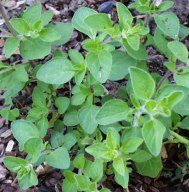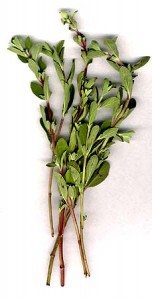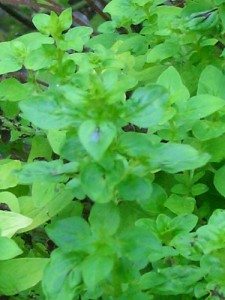 By F.R.E.E. Will LuxEco Editorial Assistant & Author of In The Spice Cabinet series
By F.R.E.E. Will LuxEco Editorial Assistant & Author of In The Spice Cabinet series
Before I go any further with this article, I would like to wish a happy 2011 to all my readers. I hope this installment of In the Spice Cabinet finds you all in good spirits and fully prepared for the new journey this year will present to us all. In a lot of ways this article series embodies everything that comes along with welcoming in a new year, all of what we take with us into the coming year and what we choose to leave behind. In this case, what we are able to learn from history in regards to what and how we eat, can be the catalyst for a shift in how we look at not only the collective diet of this country in particular, but also our overall health. Through this shift we can allow ourselves the opportunity for the rediscovery of information and preparation techniques of those herbs and spices that have been apart of our lives for so long. Although the journey may be a long hard road at times, the payoff is a greater connection to the Earth from which all things come, a better understanding of the historical background of what we now know to be holistic living (because in some respects it was merely everyday living many centuries ago), and an overall sense of well-being—dare I say even joy. So in doing my research for the next spice for the series one of the criteria for my decision was finding a spice that represents the more joyous moments in life. It didn’t take long before I found the right herb in order to ring in the New Year. So it is with the same joyous spirit that this installment of In the Spice cabinet presents the herb marjoram.
Like the previous entry, sage, marjoram is also a member of the mint family (Lamiacae for those up on plant family names). Unfortunately, that’s pretty much where the similarities end. In fact of all the members of the mint family that are currently—and have been for many centuries—used in the kitchen, marjoram is probably one of, if not the mildest of those particular group of herbs. That has not staved off any confusion associated with marjoram and the other more renowned, and perhaps even more coveted herb (on some levels), and isn’t necessarily helped along by science which, ironically enough, is meant to properly distinguish between species based on certain distinguishing characteristics. You see, marjoram, in addition to being a member of the mint family, shares the same scientific genus name as oregano, Origanum, and has been known to be referred to in some circles as “wild oregano” or “pot marjoram” due to it being a wonderful and useful addition to any garden. To further confuse matters, pot marjoram, a variety typically used, and known more for purely decorative purposes, is also called Cretan oregano (Origanum onites), and also French marjoram. Greek oregano (Origanum vulgare) is also sometimes called “wild marjoram,” or even “common marjoram,” further muddling an already murky picture when it comes to distinguishing between the two herbs. Is anybody confused yet? Fortunately there remains hope in being able to distinguish between the two herbs.
 Although marjoram carries a botanical name that denotes its grouping in the same genus as oregano (Origanum majorana), it does in fact have an alias of sorts to better distinguish between the two, Majorana hortensis. It is also, in culinary circles, distinguished from other less palatable
Although marjoram carries a botanical name that denotes its grouping in the same genus as oregano (Origanum majorana), it does in fact have an alias of sorts to better distinguish between the two, Majorana hortensis. It is also, in culinary circles, distinguished from other less palatable
varieties of the herb by the more common name ‘sweet’ or ‘knotted’ marjoram . From a purely physical standpoint oregano tends to be the hardier of two when discussing ideal growing condition with marjoram requiring much drier conditions, and more in the way of full sunlight in order to reap the best quality. The two related herbs are also distinguished between their flowering tops, oregano flowers typically being a pink/purple while marjoram flowers tend to be white. Even from a chemical standpoint there are clearly differences in the composition and ratio of various phenols (i.e. chemical compounds) which is more easily recognizable (especially for those unfamiliar with organic chemistry—myself included to a degree) by simply tasting a sprig of each. Of the two, marjoram is the sweeter due in part to it containing significantly less of the compounds carvacrol and thymol as apart of the combining factors that make up the essential oil. Of interesting note about the essential oil of Marjoram, it yields a very small amount of oil compared to the amount of leaves it takes. A mere 2 lbs of the oil is yielded from 100 lbs of leaves.
I certainly hope I was able to create a more clearer picture as it comes to distinguishing between the two, because to tell you the truth the research put into making sure I’m as informative and engaging as possible for the sake of my readers was enough to induce a couple of headaches with this particular entry. So for my readers to come away with even the slightest bit of clarification makes it all worth it. The history of marjoram’s uses in and out of the kitchen and its origins are a lot less confusing when compared to oregano. Originating in the northern part of Africa and Asia Minor and eventually becoming naturalized to the Mediterranean region of Southern Europe, marjoram has long been associated with the ethereal, and the esoteric. In ancient times, Egyptians used marjoram along with other precious and sacred herbs to assist in the embalming process through the appeasing of the Gods. To this day the vast majority of the world’s supply of marjoram comes from Egypt. Upon making its way into Eastern Europe and the northern Mediterranean, Europeans, particularly Greeks and Romans made wreaths of marjoram and placed them on the crowns of newly married couples to grant them happiness—its scientific genus name translating to mean joy of the mountains, and its Latin nomenclature, amaracum, translates to mean love. Because of its sweet scent, Romans believed that it had been touched by the goddess Aphrodite who left her fragrance (i.e. essence) on the plant so as to remind mortals of her beauty. It also became folklore that marjoram growing on a grave sight denoted a peaceful transition into the afterlife.
 For those of us still amidst the land of the living marjoram is an invaluable addition to any garden or pantry. In the garden, it’s said that marjoram is known as a prized companion to other plants around them particularly because of its ability to repel pest insects that can potentially cause damage. Before the discovery of hops, marjoram was used in the brewing process of beer, and was also used by Greeks to make a wine known as hippocras, probably named after Hippocrates. In the kitchen marjoram is one of the better herbs when it comes to its flavor being preserved after drying but because of its delicate flavor it’s always best to add it to dishes as they are nearing completion. In Germany where it is known by the name wurstkraut, it is a staple flavoring for the regions renowned sausages; the literally means the sausage herb. Marjoram is also a good accompaniment to the herbs thyme, black pepper, juniper berries and bay leaves. It shines its brightest when cooked with venison, in ragouts, and mutton dishes, but can accompany vegetables like eggplant, potatoes, onions cabbage and even beans as well. In France it is a key ingredient in the seasoning mixture known as fines herbes and also bouquet garni which bring out the best in fish, lamb, and pork dishes.
For those of us still amidst the land of the living marjoram is an invaluable addition to any garden or pantry. In the garden, it’s said that marjoram is known as a prized companion to other plants around them particularly because of its ability to repel pest insects that can potentially cause damage. Before the discovery of hops, marjoram was used in the brewing process of beer, and was also used by Greeks to make a wine known as hippocras, probably named after Hippocrates. In the kitchen marjoram is one of the better herbs when it comes to its flavor being preserved after drying but because of its delicate flavor it’s always best to add it to dishes as they are nearing completion. In Germany where it is known by the name wurstkraut, it is a staple flavoring for the regions renowned sausages; the literally means the sausage herb. Marjoram is also a good accompaniment to the herbs thyme, black pepper, juniper berries and bay leaves. It shines its brightest when cooked with venison, in ragouts, and mutton dishes, but can accompany vegetables like eggplant, potatoes, onions cabbage and even beans as well. In France it is a key ingredient in the seasoning mixture known as fines herbes and also bouquet garni which bring out the best in fish, lamb, and pork dishes.
As for its medicinal qualities, marjoram has been used over the centuries as a tea to aid with headaches, head colds, frazzled nerves, and sinuses. It has also been used to cure insect and snake bites and also retains astringent qualities that—like with most herbs, particularly those from the mint family—can ease upset stomachs and stimulate the circulation of blood through the body. When inhaled, the steam from marjoram contains expectorant qualities making it useful in combating asthma, loosening phlegm, and easing irritated airways. The oil extracted from the leaves (and sometimes flowers) is useful for achy joints and muscle pain and lately has been the subject of research concerning regarding pain caused by neuritis due to fibromyalgia. On top of containing valuable antioxidants marjoram is also a good source of iron, potassium, magnesium, and even vitamin C. Interestingly the British Journal of Medicine did research that shows eating salad with homemade oil & vinegar dressing flavored with marjoram contains the antioxidant power equivalent to 200 milligrams of vitamin C. Commercially extracts of marjoram are used in seasoning for a lot of processed meats like bologna and liverwurst. It is also used in cosmetic products such as perfumes, lotions, and even shaving cream, and can be used in the home as a gargle to clear clogged sinuses. Now that I’ve been able to make sense of it all, may there be not only a sense of relief for those who may or may not have known what they were using, but also a renewed sense of joy.













